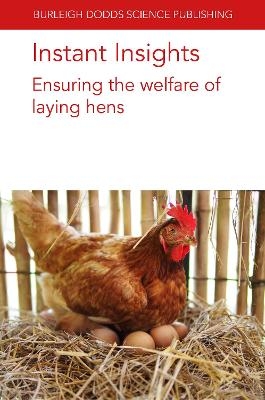
Instant Insights: Ensuring the Welfare of Laying Hens
Burleigh Dodds Science Publishing Limited (Verlag)
978-1-80146-627-1 (ISBN)
This collection features five peer-reviewed reviews on ensuring the welfare of laying hens.
The first chapter highlights the key welfare issues in poultry housing and management, focussing on the use of conventional cages to house laying hens. The chapter then explores the emergence of enriched cages and cage-free housing, as well as the benefits and risks of each system on bird health and welfare.
The second chapter reviews the range of welfare issues affecting free range laying hens. The chapter also highlights the need to improve current understanding of how laying hens behave in free range systems to be able to adequately meet their health and welfare needs.
The third chapter discusses the use of beak trimming methods, as well as the welfare concerns that arise as a result of their use. The chapter highlights alternative strategies to reduce the need for these practices which are known to incur acute pain.
The fourth chapter reviews the impact of housing and management systems on the skeletal and cognitive development of laying hens. It discusses how nutrition and housing can be optimised to reduce the occurrence of bone health issues.
The final chapter reviews current research on the genetics of behavioural traits in poultry, focussing on how breeding can be optimised to reduce aggressive behaviour in laying hens.
Chapter 1 - Welfare issues in poultry housing and management: laying hens: Victoria Sandilands, Scotland’s Rural College (SRUC), UK; 1 Introduction 2 Conventional cages 3 Enriched cages 4 Cage-free housing 5 Conclusion 6 Where to look for further information 7 References
Chapter 2 - Welfare issues affecting free-range laying hens: Dana L.M. Campbell, University of New England and CSIRO, Australia, Sarah L, Lambton, University of Bristol, UK, Isabelle Ruhnke, University of New England, Australia and Claire A. Weeks, University of Bristol, UK; 1 Introduction 2 Use of the outdoor range 3 Mortality, health and correlations with range use 4 Predators and pathogens 5 Ranging, nutrition and grass impaction 6 Feather pecking and cannibalism 7 Summary 8 Future trends in research 9 Where to look for further information 10 References
Chapter 3 - Beak trimming of laying hens: welfare costs and benefits: Dorothy McKeegan, University of Glasgow, UK; 1 Introduction 2 Feather pecking and cannibalism 3 The welfare impact of beak trimming 4 Effects of beak trimming on injurious pecking and production 5 Alternative strategies to reduce the need for beak trimming 6 Conclusions and future directions for research 7 Where to look for further information 8 References
Chapter 4 - Bone health and associated problems in layer hens: Christina Rufener, University of California-Davis, USA; and Michael J. Toscano, University of Bern, Switzerland; 1 Introduction 2 Bone development, growth and remodelling 3 Identified bone health problems 4 Contributory factors to poor bone health 5 Influence of poor bone health on productivity and welfare 6 Strategies for improving bone health 7 Future trends in research 8 Where to look for further information 9 References
Chapter 5 - Genetics and genomics of behavioral and welfare traits in poultry species: Heng-wei Cheng and Sha Jiang, Livestock Behavior Research Unit, USDA-ARS, USA and Southwest University, China; 1 Introduction 2 The relationship of natural and artificial selection to animal welfare 3 Management, behavior and welfare in poultry 4 Selection programs, aggression and poultry welfare 5 Group selection approaches to reduce aggression 6 Limitations of selection programs 7 Summary and future trends 8 Where to look for further information 9 References
| Erscheinungsdatum | 12.05.2023 |
|---|---|
| Reihe/Serie | Burleigh Dodds Science: Instant Insights |
| Zusatzinfo | Color tables, photos and figures |
| Verlagsort | Cambridge |
| Sprache | englisch |
| Maße | 152 x 229 mm |
| Gewicht | 235 g |
| Themenwelt | Weitere Fachgebiete ► Land- / Forstwirtschaft / Fischerei |
| ISBN-10 | 1-80146-627-0 / 1801466270 |
| ISBN-13 | 978-1-80146-627-1 / 9781801466271 |
| Zustand | Neuware |
| Informationen gemäß Produktsicherheitsverordnung (GPSR) | |
| Haben Sie eine Frage zum Produkt? |
aus dem Bereich


